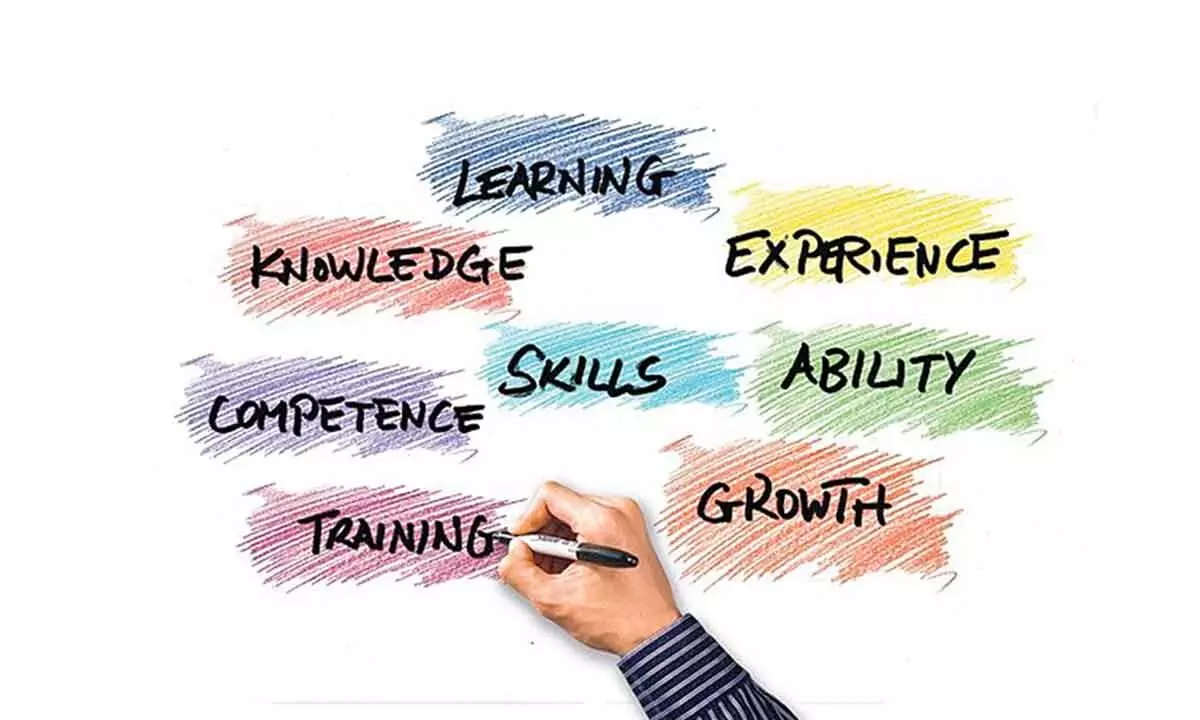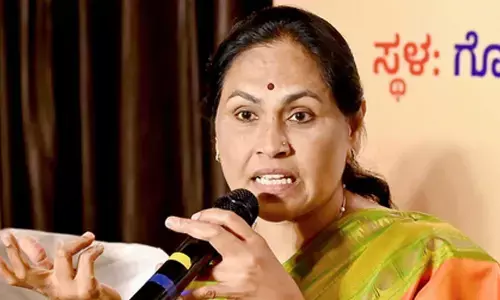Empowering youth with skills for sustainable development

Skills play a pivotal role in optimum utilisation of human resources. Skilled workforce is an asset and also a prerequisite for sustainable economic development.
Skills play a pivotal role in optimum utilisation of human resources. Skilled workforce is an asset and also a prerequisite for sustainable economic development. The World Youth Skills Day-2022 has rightly been focussed on 'learning and skills for life, work, and sustainable development' in view of the ongoing build back process.
The growing youth population has thrown up many challenges and opportunities for the policy makers everywhere. The increasing use of technology and changing dynamics of the labour market are among some compelling reasons why efforts must be made to equip our youth with employable and entrepreneurial skills so that they don't only cope with a changing world but also become an active agent of positive changes.
Technical and vocational education and training (TVET) institutions have an important role to play in promoting entrepreneurial values that are important for young people's lives, economic development and a sustainable society. From ensuring entrepreneurial learning to mainstreaming employable skills in vocational training, a wholesome approach is required to arm youth with skills for employment, decent work and entrepreneurship. TVET institutions, firms, unions of employees, employers, policy makers, think tanks, public policy experts and development partners – all need to come together to implement skill related programmes in a mission mode.
The new National Education Policy-2020 is well aligned with future needs and challenges. Through vocational education at school level, serious efforts have been made to fill skill gaps. By 2025, at least 50 per cent of learners through school and higher education systems shall have exposure to vocational education.
One vocational course for every student before he or she completes 10+2 will do wonders. It is estimated that by 2025, there will be 2.23 crore new employment opportunities for which the workforce will be needed that is equipped with skills to handle Internet of Things (IoT), Artificial Intelligence (AI), Real Time Analytics, 5G and so on. It is good that NEP-2020 has laid the emphasis on scientific and vocational training.
India is among the nations in the world having a relatively larger youth population, with about 65 per cent of the population under 35 years of age. The youth in the age group of 15-29 years comprise 27.5 per cent of the population. We have in place a mechanism which is not only capable of skilling, reskilling and upskilling youth to deal with gaps regarding skills and competencies, which will be in demand after the pandemic is overcome. It is equally important to ensure that skills gained are recognised, certified and employable, with a special focus on offering skill development opportunities for out-of-school youth and those who are not in employment, education or training.
We need to prepare our youth for future skills. The 4th Industrial Revolution - Industry 4.0 – is all about automation and data exchange at all levels of production to increase productivity, efficiency and also address the issues of sustainability, climate change and host of other such relevant concerns. Make India has given a big boost to the manufacturing sector.
The total employment in this sector has increased from 57 million in the year 2017-18 to 62.4 million in the year 2019-20. The manufacturing sector contributes around 17 per cent to the country's gross domestic product (GDP), which is to be increased to 25 per cent. This will create more job opportunities for skilled workers.
Why is skill development important? Skills and knowledge are driving forces of economic growth and social development for any country. Countries with higher levels and better standards of skills adjust more effectively to the challenges and opportunities in domestic and international job markets.
As per NSSO, 2011-12 (68th round) report on 'Status of Education and Vocational Training in India,' among persons of age 15-59 years, about 2.2 per cent reported to have received formal vocational training and 8.6 per cent reported to have received non-formal vocational training. The debate on the exact quantum of the challenge may continue but there is no dispute over the fact that there is a huge scope for skill development programmes in the country.
As per the Environment Scan Report, 2016 commissioned by the National Skill Development Corporation (NSDC), there was an estimated incremental human resource requirement of 103 million during 2017-2022 across 24 sectors such as agriculture, building construction and real estate, retail, logistics, transportation and warehousing, textile and clothing, education and skill development, handloom and handicraft, auto and auto components, private security services, food processing, domestic help, tourism, hospitality and travel, gems and jewellery, beauty and wellness, banking, financial services and insurance, telecommunication, pharmaceuticals, media and entertainment.
It is gladdening indeed that a lot is being done under the visionary leadership of Prime Minister Narendra Modi on the front of skill development. A separate Ministry of Skill Development and Entrepreneurship (MSDE) was set up in 2014 to give a boost to skill development efforts in the country.
The Ministry launched the third phase of its flagship scheme – Pradhan Mantri Kaushal Vikas Yojana 3.0 (PMKVY 3.0) in January last year, aimed at promoting skill development throughout the country to address the industry needs, meet the market demands, imparting skills in services and in new-age job roles that have become crucial in the post- pandemic era. Under the PMKVY 3.0, over 3.74 lakh people have been enrolled, more than 3.36 lakh trained, over 2.23 assessed and more than 1.65 lakh certified. As many as 1136 Industrial Training Institutes (ITIs) are also engaged in training around 20,000 candidates in different States and Union Territories.
Since skills are an integral part of employment, a means for the young to earn their livelihoods and realise their aspirations, an integrated approach should be adopted in making them industry ready in more ways than one. Technologies have changed the employment scenarios globally and accordingly world economies are undergoing structural metamorphosis.
The National Youth Policy-2021 rightly lays emphasis on creating a future where our youth have 'varied and sustainable employment opportunities.' A large number of our youth live in rural and semi- urban areas. Their integration into self-help groups (SHGs) and co-operative societies will help in skilling them as per the needs. Informal and gig economies engage a chunk of them. A mechanism should be worked out to ensure that their skilling and upskilling are in sync with market needs in both rural and urban areas.
We need to note that the services sector cannot be the sole harbinger of growth and job hope. Services sector contributes over 50 per cent to GDP. There is a need to accelerate efforts to create more and more skill driven job opportunities in the manufacturing sector. IoT, AI, Machine Learning, Robotic Process Automation (RPA), Edge Computing, Quantum Computing, Virtual Reality and Augmented Reality, Block chain, Cyber Security, and space technologies need to be aligned with university curriculum as well.
The participation of the private sector in providing space-based services will open up several opportunities. The need is to be ever ready to meet challenges with skills. I strongly feel that our campuses of higher education including ITIs should be completely transformed. Not only students, even our college and university faculties should involve themselves in serious research work. Our education must be aligned with newer technologies, opportunities and challenges for which the NEP-2020 provides a great and visionary roadmap.
(The writer is Governor, Haryana; Views are strictly personal)













